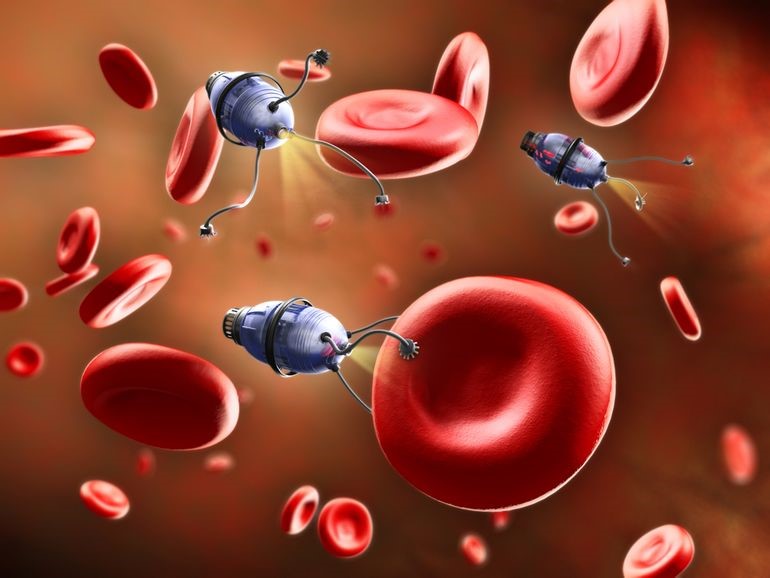
Nanomachines, the microscopic robot deus ex machina of science fiction are on their way to becoming a real, tangible method for delivering medicine to specific target parts of the body. A new technique developed by scientists from ETH Zurich and Technion-Israel Institute of Technology offers a means of controlling their movement and resolving a long-standing issue that’s prevented the field from gaining traction as a means for combating infections, cancers, type 1 diabetes, and even accessing the blood-brain barrier.
Although such tiny machines can be theoretically programmed to deliver their medical payload to the exact site of disease, or set to remove specific cells such as cancer cells — an effect which could lessen the need for invasive surgery and speed up recovery time, simply injecting them into the bloodstream and hoping for the best is not a feasible option.
Realizing the vast potential such machine can offer to the field of medicine, scientists have spent years attempting to nail down a proper technique to guiding the robots to the injury site. Previous techniques included coating nanoparticles in proteins and magnetically guiding along, a microbot swimmer inspired by the scallop, and integrating micro-motors powered by the stomach gas bubbles. This last approach was responsible for the world’s first controlled movement of a nanobot within a living creature.
Building on these past principles, the ETH Zurich and the Technion-Israel Institute of Technology team’s method incorporated nanorobots made by binding together a piece of polymer with two magnetic, metal nanowires to form a three-piece chain approximately the length of the width of a silk fiber. They then placed the machine within a fluid thicker than blood and applied an oscillating magnetic field which caused the nanorobot to move in an S-shaped motion much like the tail of a tadpole, or the body of an underwater snake.
The resulting movement traversed through the equivalent of bodily fluids with relative ease, as a speed of almost one body length per second. The same magnetic field can be used to alter the robot’s course and direct it to its target.
Check out the video below to witness the nanobot in action:
Source: Gizmag
Image via Shutterstock
Advertisement
Learn more about Electronic Products Magazine





